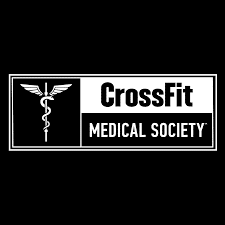CrossFit: The Scalable Cure for Modern Health — Backed by Data and Driven by Purpose
In an era where chronic disease, sedentary lifestyles, and reactive healthcare dominate the landscape, CrossFit is making a bold claim: “it’s not just a workout — it’s the cure”. With its latest campaign, CrossFit Is the Cure, the brand positions itself as a proactive solution to the health crisis, offering scalable fitness, measurable progress, and community-driven transformation.
📊 Injury Rates: How CrossFit Stacks Up Against Other Sports
Despite its reputation for intensity, CrossFit’s injury rates are comparable — and in some cases lower — than other major sports
⚠️ Injury Rates per 1,000 Training Hours: CrossFit vs Major Sports
| Sport | Injury Rate (per 1,000 hrs) | Common Injury Sites | Notes |
|---|---|---|---|
| CrossFit | 2.1–3.1 | Shoulder, lower back, knee | Comparable to Olympic lifting and gymnastics; most injuries are overuse. |
| Rugby (Union) | 25 (training), 81–100 (match) | Ankle, shoulder, head/neck | Extremely high in match play due to contact and tackling. |
| Basketball | 3–6 | Ankle, knee, finger | Higher during games; sprains and overuse injuries dominate. |
| Netball | 9–14 | Ankle, knee, wrist | Mostly non-contact injuries from landing and pivoting. |
| Soccer | ~7.2 | Knee, ankle, groin | High injury rate due to sprinting, cutting, and contact. |
| Weightlifting | ~2–4 | Shoulder, lumbar spine | Similar to CrossFit; low injury rate when coached properly. |
| Running | 2.5–12.1 | Knee, shin, foot | Surprisingly high due to repetitive strain and poor load management. |
🧠 Key Takeaways
- CrossFit’s injury rate is relatively low compared to contact sports like rugby or even high-volume endurance sports like running.
- Rugby and soccer have the highest injury rates due to frequent collisions and high-intensity play.
- Basketball and netball sit in the mid-range, with most injuries stemming from dynamic movement and poor landing mechanics.
- Weightlifting and CrossFit show similar rates, with injuries often linked to poor form or excessive volume—not inherent danger.
📌 Context Matters
- Injury rates can vary based on training intensity, athlete experience, and coaching quality.
- Match play tends to have higher injury rates than training sessions.
- Sports with repetitive movements (like running) may have lower acute injury rates but higher chronic injury burden.
Key Risk Factors:
- Poor form under fatigue
- Overtraining without adequate recovery
- Lack of supervision or coaching
Easier way to summarize this is: Injuries happen from bad programming, bad coaching, Ego, and rare occasion… just bad luck. CrossFit is NOT the injury factory that it gets a bad reputation about, but chose your affiliate gym well.
Importantly, injury rates are lower among athletes who train more consistently and with proper guidance, underscoring the importance of coaching and scalable programming.
🔄 Scalability: Fitness for Every Body
One of CrossFit’s greatest strengths is its infinite scalability. Whether you’re a beginner recovering from injury or an elite athlete preparing for competition, CrossFit workouts can be tailored to meet your needs:
- Modifiable Movements: Every workout can be adjusted for intensity, load, and complexity.
- Inclusive Programming: From adaptive athletes to seniors, CrossFit offers accessible fitness for all.
- Progressive Development: Coaches guide members through gradual increases in strength, endurance, and mobility.
This scalability is what makes CrossFit not just a sport, but a lifelong health solution.
💪 CrossFit Is the Cure: A Campaign for Health Transformation
CrossFit’s 2025 campaign, CrossFit Is the Cure, is a rallying cry against the reactive, pill-based model of modern healthcare. The campaign highlights:
- Chronic Disease Prevention: CrossFit coaches act as frontline health agents, helping members reverse or prevent conditions like obesity, diabetes, and hypertension C.
- Quantifiable Fitness: Health is measured through increased work capacity across broad time and modal domains — a metric that reflects real-world resilience.
- Community and Accountability: CrossFit affiliates foster environments where behavioral change is not just encouraged, but celebrated.
In contrast to the 5–7 minute doctor visits dictated by insurance billing, CrossFit offers daily engagement, education, and empowerment.
🌍 A Global Movement with Local Impact
With the 2025 CrossFit Games showcasing elite performance and the campaign pushing grassroots health reform, CrossFit is redefining what it means to be fit — and what it means to be well.
Whether you’re chasing podiums or just trying to keep up with your kids, CrossFit offers a path forward. It’s not about perfection. It’s about progress. And it’s about reclaiming health — one rep at a time.

